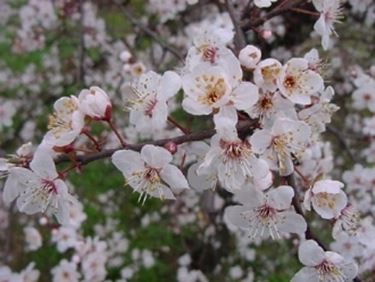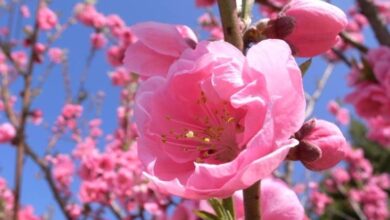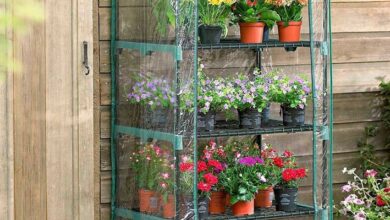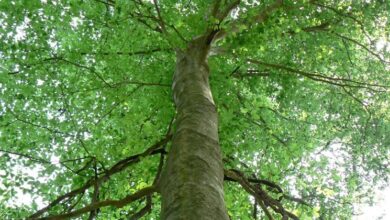Mandorlo – Prunus amygdalus

Generality
It is a fairly vigorous tree, which can reach a height of 8-10 m, with a habit of variable growth and a tortuous trunk, with a blackish rind. The roots are taproot, expanded and very ramified; therefore the almond tree has a good resistance to drought but, at the same time, it needs a cultivation area of at least 1-1.5 m. The leaves are deciduous, of an elongated oval shape, with pointed apex, toothed edge and glands in a basal position; the buds are three on each node, the lateral ones flower while the central one is wood. The flowers, emitted before the leaves, are hermaphroditic, white and sessile; flowering occurs in February, so the almond tree is very sensitive to spring frosts. The fruits are drupes having an oval or elongated shape with a leathery exocarp called hull and a consistent, perforated endocarp, which contains the almond, containing 30-60% of oil. The pollination is entomophilous, operated by bees and other pollinating insects. The almond tree finds its ideal habitat in warm temperate climates with mild winters, although able to withstand winter temperatures of -15, -20 ° C, and low rainfall, therefore typical of the Mediterranean basin. The south, south-east and south-west exposures allow the illumination of the entire canopy. although able to withstand winter temperatures of -15, -20 ° C, and low rainfall, therefore typical of the Mediterranean basin. The south, south-east and south-west exposures allow the illumination of the entire canopy. although able to withstand winter temperatures of -15, -20 ° C, and low rainfall, therefore typical of the Mediterranean basin. The south, south-east and south-west exposures allow the illumination of the entire canopy.

Varieties and rootstocks
The almond cultivars have a ripening period between the beginning and the end of September; the most important, from the earliest to the latest, are: Fra Giulio grande, Supernova, Tuono, Fascionello, Fellamosa, Pizzuta d’Avola, Ferragnes, Falsa Barese, Filippo Ceo and Genco (the latter two are self-fertile). Most varieties are self-sterile, so they need good pollinating cultivars with contemporary flowering.
The most used rootstocks are the franc, the GF 677 (peach-almond hybrid) and the PS A6 (obtained from the peach tree). The first is suitable for dry cultivation and fears heavy soils at risk of water stagnation; it adapts to poor, stony, deep, dry and very calcareous soils. It is susceptible to root parasites, the latter anchor well to the ground, it is moderately vigorous, similar to the cultivars, which bear fruit well if grafted onto it; the plant goes into production at the 6-8th year.
GF 677 adapts to drought and calcareous soils, as long as they are well drained; moreover it is very vigorous, induces an early entry into production (in the fifth year) and high productivity.
PS A6 is a rootstock widely used in American intensive plants because it induces less vigor than GF 677; compared to it it is less resistant to drought and limestone, it induces an earlier flowering and an earlier ripening.
Cultivation techniques
In Italy, almond cultivation has always been destined for marginal areas. For the new almond tree plants, the training system adopted is the 4-5 branch pot, with the scaffolding at a minimum height of 70 cm from the ground to allow mechanical harvesting; the recommended planting distance is 6 X 6 m (277 plants per hectare).
Most almond cultivars tend to bear fruit on bunches in May, while some, including Fascineddu and Texas, produce both on one-year-old mixed branches and on flowering spurs. Winter pruning is light and must be done every year by eliminating suckers, dry branches and some mixed branches.
Through fertilization, the main mineral elements, fundamental for the development and production of plants, such as nitrogen, phosphorus and potassium, are brought to the soil. The administration of nitrogen must be divided into 2-3 interventions: 30-50 kg / ha after harvesting and as many units distributed between flowering and fruit growth, avoiding contributions near ripening. Phosphorus and potassium, respectively 20-40 kg / ha and 100-200 kg / ha, are generally distributed in autumn, while the microelements can be supplied with fertigation.
The almond tree needs 150-200 mm of rain between flowering and harvesting; irrigation is foreseen only in specialized plants using rootstocks that are not very resistant to drought, by means of localized drip or spray systems.
Collection
According to their destination, almonds can be fresh or dried for the table and, mainly, for confectionery.
The fresh fruits are harvested in advance, when the husk is still tender and with a pleasant taste, while the dried almonds are harvested before complete ripeness, with the fruits beginning to fall and the husk, now dry, which begins to open. The harvest takes place in September; in Italy it is done manually by dropping the fruits with rods (knocking), while in the Spanish and American intensive plants it is done mechanically with shakers on the branches and on the trunk. Once harvested, the almonds must be separated from the husk and left to dry in the sun or in dryers.




